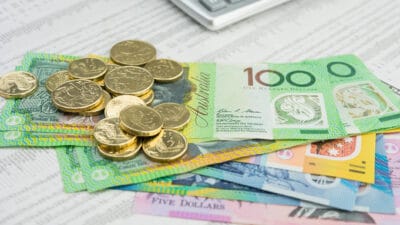The big four ASX banks are expected to pay much bigger dividends in FY21 compared to FY20.
COVID-19 caused a big hit to bank profits in FY20, with high levels of credit provisions.
But things are now much better. Indeed, the NAB CEO said that the economy is looking much stronger from the bank's perspective. As my colleague Brooke Cooper covered on Friday, Mr McEwan said about improving conditions:
I see this when I visit customers around the country. They are more confident, and they are looking to expand. Others, particularly farmers, are choosing to pay off their loans faster – a trend we have seen previously in good times.
Mr McEwan also revealed that 98% of previously-deferred loans have been taken off the payment holidays.
All the banks reported a similar trend in their recent results during reporting season in February 2021.
But what is going to happen with the dividends?
Strong bank balance sheets
Just under four years ago, the Australian Prudential Regulation Authority (APRA) announced that banks need to have strong balance sheets. Unquestionably strong balance sheets.
At the time of the rules being implemented, APRA said:
The four major Australian banks need to have CET1 capital ratios of at least 10.5 per cent to meet the 'unquestionably strong' benchmark.
APRA said that CET1 is the highest quality capital and therefore most likely to create confidence in an ADI's financial strength.
Well, the big four ASX banks of Commonwealth Bank of Australia (ASX: CBA), Westpac Banking Corp (ASX: WBC), National Australia Bank Ltd (ASX: NAB) and Australia and New Zealand Banking Group Ltd (ASX: ANZ) all have balance sheets that are materially stronger than the 'unquestionably strong' benchmark.
At 31 December 2020, the CET1 ratios at the big four banks were: CBA (12.6%), Westpac (11.9%), NAB (11.7%) and ANZ (11.7%).
This level of capital has some analysts suggesting that much bigger dividends are likely over the next 12 months.
Forecast dividends and yields
Every broker covers the big banks, so I'm just going to use one of the most recent estimates for each of the big banks – Morgan Stanley's.
The broker currently rates CBA shares as a sell, with a share price target of $79. The expected dividend for FY21 is $3.25 per share. This translates to a grossed-up dividend yield of 5.3%.
Morgan Stanley has a buy rating on Westpac, with a share price target of $27.20. The forecast dividend for FY21 is $1.10 per share. This equates to a grossed-up dividend yield of 6.2%.
The broker has a neutral rating on NAB, with a share price target of $25.30. The estimated dividend is $1 per share. This would result in a grossed-up dividend yield of 5.3%.
Morgan Stanley has a buy rating on ANZ shares, however the share price target is $26.20. The forecast dividend is $1.15 per share, this is a grossed-up dividend yield of 5.7%.
Based on the above estimates, Morgan Stanley seems to think that Westpac will have the biggest dividend yield this year. But that is just one broker's opinion about one financial year. Future dividends may vary even more, depending on how much growth each bank is able to generate.









